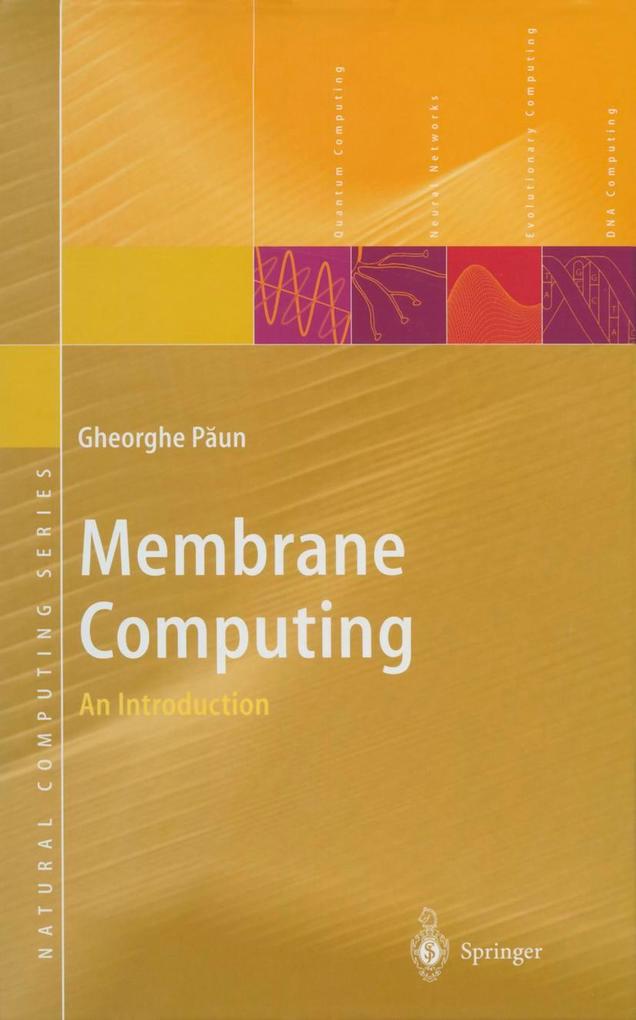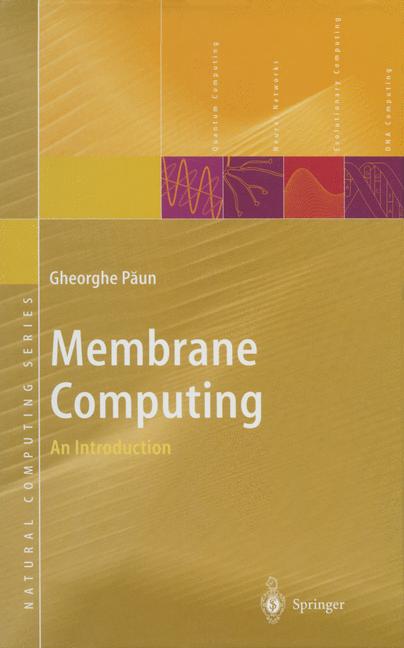Like quantum computing or DNA computing, membrane computing is an unconventional model of computation associated with a new computing paradigm. The field of membrane computing was initiated in 1998 by the author of this book; it is a branch of natural computing inspired by the structure and functioning of the living cell and devises distributed parallel computing models in the form of membrane systems, also called P systems.
This book is the first monograph surveying the new field in a systematic and coherent way. It presents the central notions and results: the main classes of P systems, the main results about their computational power and efficiency, a complete bibliography, and a series of open problems and research topics. Thus, the book is indispensible reading for anybody interested in molecular computing.
Inhaltsverzeichnis
1. Introduction: Membrane Computing What It Is and What It Is Not. - 2. Prerequisites. - 2. 1 The Biological Membrane. - 2. 2 The Neuron. - 2. 3 Elements of Computability. - 2. 4 Bibliographical Notes. - 3. Membrane Systems with Symbol Objects. - 3. 1 A Simple Class. - 3. 2 Two Examples. - 3. 3 The Power of the Simple Class. - 3. 4 Basic Extensions. - 3. 5 A Formal Definition. - 3. 6 Further Extensions. - 3. 7 Systems with External Output. - 3. 8 Bibliographical Notes. - 4. Trading Evolution for Communication. - 4. 1 Systems with Symport/Antiport. - 4. 2 Computational Universality. - 4. 3 Controls on the Use of Rules. - 4. 4 Following the Traces of Objects. - 4. 5 Systems with Carriers. - 4. 6 Bibliographical Notes. - 5. Structuring the Objects. - 5. 1 Rewriting Membrane Systems. - 5. 2 Some Variants and Their Power. - 5. 3 Splicing Membrane Systems. - 5. 4 Contextual Membrane Systems. - 5. 5 Insertion Deletion Membrane Systems. - 5. 6 Bibliographical Notes. - 6. Networks of Membranes. - 6. 1 The Splicing Case. - 6. 2 Using Symport/Antiport Rules. - 6. 3 Neural-like Networks of Membranes. - 6. 4 Bibliographical Notes. - 7. Trading Space for Time. - 7. 1 Complexity Classes for Membrane Systems. - 7. 2 Using Membrane Division. - 7. 3 Using Membrane Creation. - 7. 4 Using String Replication. - 7. 5 Using Pre-computed Resources. - 7. 6 Bibliographical Notes. - 8. Further Technical Results. - 8. 1 Decidability Results. - 8. 2 Unary Systems. - 8. 3 A Representation of Context free Languages. - 8. 4 Valuating the String Objects. - 8. 5 Systems with Enhanced Membrane Handling. - 8. 6 Brief Excursion Through the Literature. - 9. (Attempts to Get) Back to Reality. - 9. 1 Getting Closer to the Cell by Energy Accounting. - 9. 2 Getting Closer to the Cell by Gemmation. - 9. 3 Getting Closer to the Cell: Bilayer Membranes. - 9. 4 In Silico Implementations. - 9. 5Artificial Life Applications. - 9. 6 A Simulation of Photosynthesis. - Open Problems. - Universality Results. - References.














